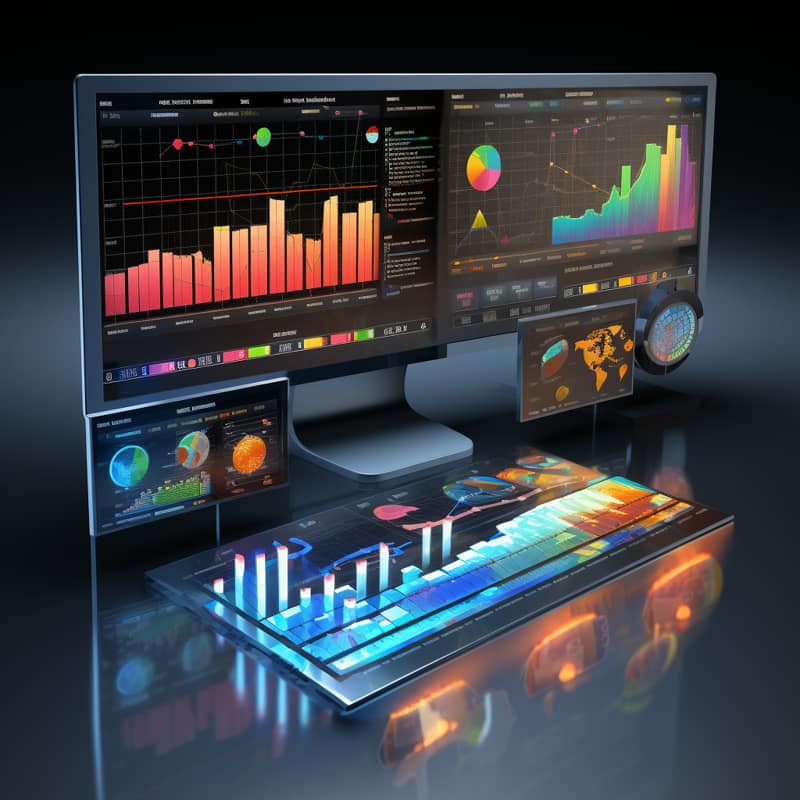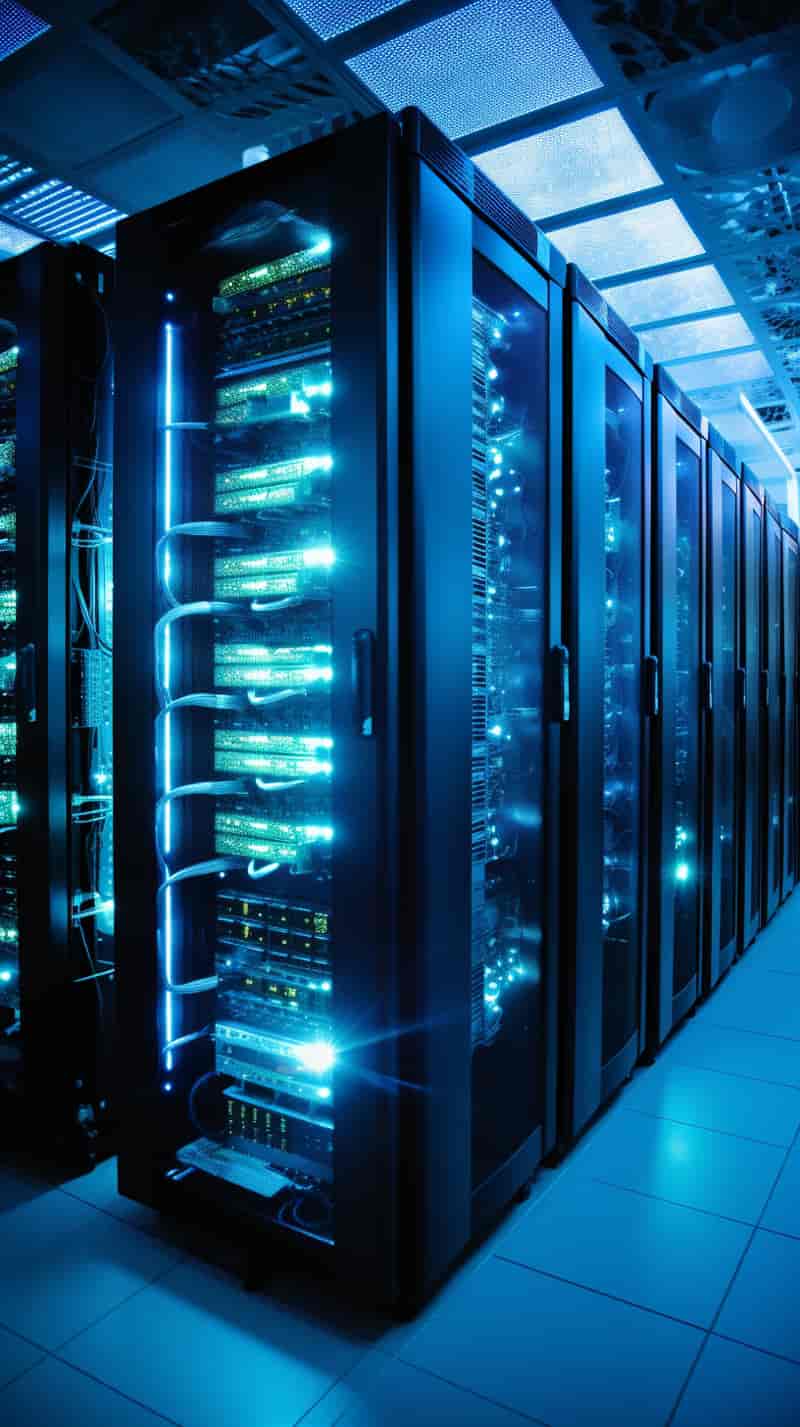DataStage Interview Questions
Architect and admininterview questions to prepare you for an interview or improve your understanding.
Whether you are a new or experienced DataStage practitioner, this list will assist in getting ready for any interview!
This blog covers some of the most commonly used DataStage Interview questions, whether that means interview preparation or simply deepening understanding. Whatever the reason,let’s get going!

1. What is DataStage?
DataStage is a powerful data integration and transformation tool for connecting to APIs, web services, and relational databases. It measures and improves data quality using quality stage, transformer, sorting, and link partitioning techniques.
2. What is the DataStage warehouse built for?
DataStage warehouse are built for analytics, allowing businesses to analyse transactions based on customer, product, time, and location.
3. What is the process of extracting data from DataStage warehouses?
The extraction process involves relation transactions about DataStage bases, such as DB2, mainframe files, and profiles like XMLs. DataStage from web services like API links is also extracted.
4. How is data filtered, validated, and aggregated in the transformation phase?
DataStage is filtered, validated, and aggregated using business rules and error codes in the transformation phase.
5. What is the final step of the DataStage process?
Once the DataStage is loaded to the target system, reports are provided based on enterprise needs and given access to business owners and top-level management.
6. What is the purpose of the DataStage tool?
The DataStage tool integrates DataStage into the online transaction process system and transforms the required DataStage into a single warehouse for analysis.
7. What kind of analysis can be conducted using DataStage warehouses?
DataStage warehouses allow businesses to analyse transactions based on customer, product, time, and location. In the e-commerce industry, for example, product, time, and location analytics can be conducted.
8. What is the process of building a DataStage warehouse?
Building a DataStage warehouse involves defining the target and the logic needed to update it, extracting DataStage from various sources, including web services like API links, filtering, validating, aggregating, and loading the DataStage into the target system for further analysis.
9. What kind of data is extracted in the extraction process of a DataStage warehouse?
Data is extracted from various sources, including DB2, mainframe files, XMLs, and web services like API links in the extraction process of a DataStage warehouse.
10. What happens to the DataStage after loading it into the target system?
Once the DataStage is loaded into the target system, reports are provided based on enterprise needs and given access to business owners and top-level management for further analysis.
11. What is the initial loading process of a DataStage warehouse?
The initial loading process of a DataStage warehouse involves loading data into shallow tables, with daily, weekly, or monthly processes depending on the business.
12. What are the sources of a DataStage warehouse?
Sources of a DataStage warehouse include Salesforce, SAP, operation DataStage basis files, and third-party systems.
13. What is the process of DataStage acquisition?
The DataStage acquisition process involves connecting to DataStage through a DataStage signal, loading the data into a staging area, cleaning it according to the business application, and loading it into dimension tables.
14. What is a DataStage board?
A DataStage board is a graphical representation of DataStage flow from source to target.
15. What is the role of a designer in DataStage?
The designer models development activities and imports table definitions, including source and target definitions.
16. What is the DataStage base relation?
The DataStage base relation is a DataStage base table definition used to compile jobs and run them.
17. What is the purpose of monitoring in DataStage?
Monitoring the execution process is possible through log information.
18. What are the DataStage scheduling tools?
DataStage scheduling tools are available for free running, but additional memory may be required for the DataStage base.
19. How is monitoring the execution process possible in a DataStage warehouse?
Monitoring the execution process is possible through log information.
20. What are the available scheduling tools in a DataStage warehouse?
DataStage scheduling tools are available for free running, but additional memory may be required for the DataStage base.
21. What is DataStage, and what are its benefits in grid computing?
DataStage is a crucial advantage of grid computing, which works on a shared memory system called pipeline and partition files.
Pipeline work on shared memory, allowing immediate record extraction and sending them to the next stage.
This approach saves time and reduces the delay and time in sequential mode.
22. What are the different types of shared memory partitioning in DataStage?
Shared memory partitioning includes round, round, round, random, and same partitions.
A round partition distributes DataStage across equal nodes, while a random partition distributes DataStage randomly across nodes.
The same partition ensures DataStage is not shuffled between nodes.
23. What are the default DataStage collecting methods in grid computing?
DataStage collecting methods like round-robin order sort are used to collect DataStage back and load it into a target system.
Round-robin sorting involves sorting DataStage based on a critical column, with the defaults being two nodes.
24. How can a configuration file perform parallel processing activities in DataStage?
A configuration file is needed for different home nodes. Node terminology includes user-specific functions, and default nodes are two.
You need to change the number of nodes to change the default configuration file.
25. What types of files can DataStage handle in grid computing?
DataStage can handle various files, such as AWS files, Big Query files, cloud files, DataStage saved main files, complex files, external sources, sequential files, structured DataStage, unstructured DataStage, and custom estimated DataStage in Excel.
It can also load DataStage from Excel into any DataStage base.
26. How does DataStage handle different file types?
DataStage can handle various files, such as AWS files, BigQuery files, cloud files, DataStage saved main files, complex files, external sources, sequential files, structured DataStage, unstructured DataStage, and custom estimated DataStage in Excel.
It can also load DataStage from Excel into any DataStage base.

DataStage Training

DataStage collecting methods like round-robin order sort are used to collect DataStage back and load it into a target system.
Round-robin sorting involves sorting DataStage based on a critical column, with the defaults being two nodes.

28. What configuration file is needed for different home nodes, and how does it work?
A configuration file is needed for different home nodes to perform parallel processing activities in DataStage.
The basic syntax for defining nodes is the server’s name and the pools.
Node terminology includes user-specific functions, and default nodes are two. You must change the number of nodes to change the default configuration file.
For example, if you want to increase the number of nodes from 6 to 64, you can change the configuration file.
29. What is the role of the quality stage in DataStage?
The quality stage in DataStage modifies DataStage based on end placement and filter conditions. It measures and improves data quality using various tools, such as matching measurements, combining measurements, and cleansing.
30. What is the transformer external filter stage in DataStage?
The transformer external filter stage in DataStage is used for DataStage filters. It filters the data based on specific criteria and can be used with other stages, such as sorting and link partitioning.
31. How can duplicates be removed from DataStage using sorting and link partitioning techniques?
Duplicates can be removed from DataStage using the sort stage and link partitioning techniques.
The sorting stage separates unit DataStage into one file and duplicates DataStage into another file. You can set the option to allow duplicates or reset them.
32. What is the role of the matching measurements in DataStage?
The matching measurements in DataStage combine measurements when it comes to DataStage matching.
Creating a configuration file and defining nodes can improve your DataStage performance and efficiency.
33. What is the process of handling DataStage structures in DataStage?
Handling DataStage structures involves taking similar and dissimilar structures. Similar structures have a consistent layout across multiple input files, while distinct structures have different table layers.
Standard columns are used in joining tables, and a funnel stage is used to join two tables. Aggregation is performed using various methods, such as summing, averaging, minimum, counting, row plots, and standard deviation.
DataStage cleansing is done by separating client and client DataStage and creating new columns in targets unavailable in the source.
34. What is the role of the transformer stages in DataStage?
The transformer stages in DataStage convert DataStage types based on DataStage type, with various transformation functions for validation, cleaning, and modification.
Mark state and voting are used to validate and clean DataStage, and the surrogate generates unique numbers for every entry.
35. What is the role of the slow training dimensions in DataStage?
The slow training dimensions in DataStage involve DataStage capture and incremental load, considering consistency, and updating existing records.
This process improves DataStage’s performance and efficiency by ensuring the data is always up-to-date and consistent.
36. What is ETL, and what is its purpose?
ETL is a process used to manage DataStage from various sources, such as job sequences, batching jobs, and scheduling.
Its purpose is to optimise time management and ensure efficient execution of jobs.
37. What is the DataStage warehouse, and what role does it play in ETL?
The DataStage warehouse is a critical component of ETL and stores DataStage for various purposes. It plays a crucial role in managing DataStage effectively.
38. Can you explain two scenarios where ETL is used in different industries?
Sure, here are two scenarios:
Scenario 1: Two bank customers, ATM transactions and online net banking, perform daily transactions such as ATM transactions and credit CAD.
They use a DataStage base called Ad Blocks, which stores day-to-day transactions in DataStage.
Scenario 2: The IRCTC, an online application in India, offers various journeys, such as bus to train.
By understanding the purpose and use of ETL, users can better plan their trips and ensure efficient use of their DataStage.
39. What is Ad BMS, and what is its relationship with ETL?
Ad BMS is a DataStage base that allows businesses to store and manage their DataStage online. It is also known as an OLTP system or a server-like service that runs the business.
These applications, developed by Java, access a lot of BMS DataStage and transactions. Ad BMS is related to ETL because it is a DataStage base that stores and manages DataStage.
40. What is the purpose of ETL in the digital world?
ETL’s purpose in the digital world is to manage DataStage from various sources, such as job sequences, batching jobs, and scheduling.
The DataStage warehouse is a critical component of ETL, and it stores DataStage for multiple purposes.
41. What stages are involved in developing and debugging an ETL system?
The stages involved in developing and debugging an ETL system are creating rows, column generators, head and tail stages, and sample stages.
Peak stages handle error log messages and entity detail levels.
Runtime column proportion connects to cloud DataStage bases. Parameters for runtime jobs and environment variables are created, and metaDataStage is put in different profiles and tables. Containers are used to optimise time and save time.
42. What is ETL?
ETL is a process of managing data from various sources using a DataStage warehouse to store it.
43. How does ETL optimise time management?
ETL allows for running ten jobs at a time, with parallel work and sequential modes, which ensures efficient execution of jobs and optimises time management.
44. What is the DataStage warehouse?
The DataStage warehouse is a critical component of ETL and is used to store DataStage for various purposes.
45. What is Ad BMS?
Ad BMS is a DataStage base that allows businesses to store and manage their DataStage online. It is also known as an OLTP system or a server-like service that runs the business.
These applications, developed by Java, access a lot of BMS DataStage and transactions.
46. What is the difference between batch control sequence mechanism and parallel work?
The batch control sequence mechanism allows running ten jobs simultaneously, with sequential modes, while parallel work allows running multiple jobs simultaneously.
47. How does ETL help in planning journeys?
ETL can be used to understand the purpose and use of ETL, which can help users better plan their journeys and ensure efficient use of their DataStage.
48. What is business analysis, and when is it necessary?
Business analysis is essential for decision-making in daily life, but it is not necessary to store DataStage.
49. Is DataStage analysis crucial for businesses?
DataStage analysis is crucial for businesses to manage their DataStage effectively and efficiently.
50. What two ways can DataStage mattersoccur in an enterprise DataStage warehouse?
DataStage matter is a subject over integer in an enterprise DataStage warehouse, with departments such as customers, sales, productive, and employees.
DataStage match can be based on department, but only the subject is considered.
51. How can DataStage be loaded from MS to a DataStage warehouse?
DataStage can be loaded from MS to a DataStage warehouse through front-end applications like development, Java, and dot using the ETL concept, which involves extraction, east transfer, transformation, and transfer.
52. What are some ETL tools available in the market?
Several ETL tools are available in the market, including Talent, DataStage, Informatica, Initial, and ODA.

DataStage Online Training

MSBA and SAP BODSsupport complete ETL plus reporting.
54. What are Informatica and ODA?
Informatica and ODA are not ETL tools but are primarily used for reporting like OBAE or Microsoft Business Intelligence.
55. What is DataStage analysis, and why is it essential for businesses?
DataStage analysis involves managing and efficiently utilising data within an enterprise.
Businesses must ensure their data is appropriately maintained and managed to make informed decisions and optimise operations.
By implementing data stage errors and utilising ETL tools, businesses can effectively manage their data and gain valuable insights into their performance.
56. What are DataStage’s “fatal errors,” and how do they occur?
DataStage “fatal errors” are issues that can occur in the DataStage process. They can occur at various frequencies, such as monthly, yearly, weekly, or quarterly.
The frequency of DataStage errors depends on the business’s needs and operations. DataStage errors can occur from top to bottom or bottom to top.
DataStage matter is a subject over integer in an enterprise DataStage warehouse, with departments such as customers, sales, productive, and employees.
DataStage match can be based on department, but only the subject is considered.
57. What is the role of ETL tools in DataStage analysis?
ETL (Extract, Transform, Load) tools extract data from various sources, transform it into a format suitable for analysis, and load it into a DataStage warehouse.
They are an essential component of the DataStage analysis process.
Several ETL tools are available in the market, including Talent, DataStage, Informatica, Initial, and ODA.
MSBA and SAP BODS support complete ETL plus reporting, while Informatica and Oda are not ETL tools but are primarily used for reporting like OBAE or Microsoft Business Intelligence.
58. What is end-to-end DataStage warehouse architecture?
End-to-end DataStage warehouse architecture is a method of organising DataStage warehouse projects involving ETL tools like IBM’s DataStage Design and Compose to support DataStage on a DataStage base, with the repository being DB2.
59. What are the four types of jobs in ETL?
The four types of jobs in ETL are parallel and sequence jobs. Server jobs are used for initial versions of DataStage, while similar jobs are designed to handle the daily increase in DataStage value.
Sequence jobs can be created using either a parallel or server job.
60. What is a DataStage base?
A DataStage base is a repository for ETL jobs and flows. Tools like Informatica use it to store and manage ETL data.
61. What is an ETL flow?
An ETL flow is a tool for loading data from various sources into a DataStage warehouse. It can manage and organise the loading process.
62. How is a parallel job designed in DataStage?
A parallel job in DataStage is designed by selecting the most recent job from the palette, the most current, and the most recent job.
63. What is a parallel cell band?
A parallel cell band is a way of creating a group of similar jobs in DataStage. It allows for the creation of multiple similar jobs to be loaded into a single cell.
64. What is DataStage, and what is it used for?
DataStage is an ETL (Extract, Transform, Load) tool that integrates DataStage into the online transaction process system, transforming the required DataStage and loading it into a single warehouse.
65. What is a DataStage palette?
A DataStage palette is a set of objects that can be used to create and design DataStage jobs. It includes various types of jobs, such as sequence activities.
66. What is a DataStage base management system?
A DataStage base management system is a database that stores and manages ETL data. It can be used to store and manage the loading process.
67. How can the ETL flow tool be used in the banking sector?
The ETL flow tool can be used in the banking sector to load credit card information from a DataStage base management system to a DataStage warehouse.
It can also store and manage other types of financial data.
68. What is a sequence activity in DataStage?
A sequence activity in DataStage, a stage, is used in parallel and server jobs. It performs specific tasks in the ETL flow.
69. What is the role of the join stage in the ETL process?
The join stage is used to integrate different DataStage and pack them together.
70. What was IBM’s immediate response to the failure of the 8-dot zero version of DDB DataStage?
IBM immediately stopped the Z dot zero version and released a Dot One version, making the file system and the repository DataStage default.

71. How can administrators create projects and users using administrative tools?
Administrators can create host and server names, specify the port ID for uniqueness, create a username and password using the administrator, and select the P1 project.
72. What is the role of the log in the ETL process?
The log is displayed to identify the jobs that need to be extracted. The log shows the status in three colours: blue, red, and green, indicating processing, success, and failure.
73. What is the purpose of the administrator client code in the ETL tool?
The administrator client code is used to manage the administration of a company using the ETL tool.
74. What is the role of the hostname in the ETL tool?
The hostname is the server or computer name and allows access to the repository or engine in the server component.
75. What is the purpose of the DataStage called DDB in a project creation process?
The DataStage, called DDB, is responsible for storing project information, including DataStage, projects, users, jobs, and logs.
DataStage is an advanced data integration platform that enables users to design, test, and deploy solutions within this tool.
By answering the interview questions on DataStage, you will demonstrate your understanding of it while showing off your knowledge as an analyst.
Based on the answers blog post in this DataStage interview questions scenario, we have presented some of the most frequently asked interview questions related to DataStage. You can demonstrate your knowledge and expertise in data integration by answering them correctly.
DataStage Scenario BasedInterview Questions blog offers an authoritative collection of interview questions related to this tool, with tips for answering them efficiently and successfully.
By thoroughly preparing and understanding key concepts and best practices before your interview, your chances of success increase significantly and demonstrate expertise to potential employers.

DataStage Course Price


Sindhuja
Author